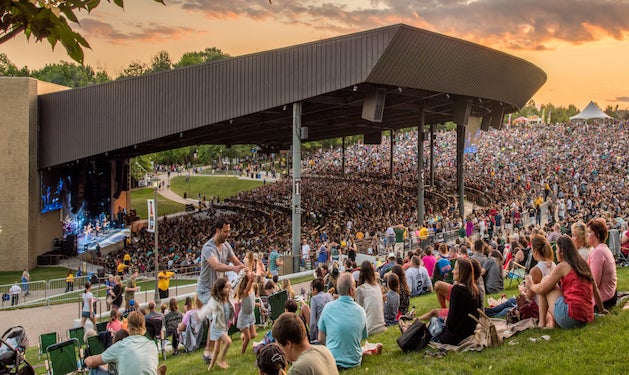Quill
After a long Friday night of music and sporadic rain, the Woodstock audience was awakened shortly after noon on Saturday by the music of Boston-based rock band, Quill, who did everything in their power to get the crowd on their feet and grooving.
Day Two, Performer 1: Quill
Performed Saturday afternoon, August 16, 12:15–12:50 pm
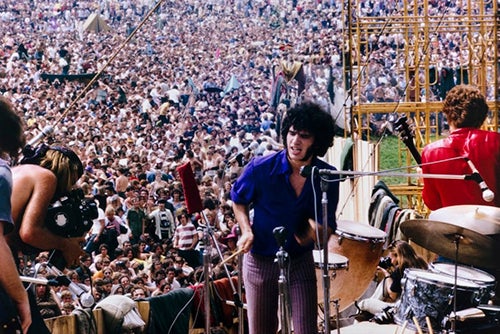
Quill Band Members
- Dan Cole: vocals
- Jon Cole: bass, vocals
- Norman Rogers: guitar, vocals
- Phil Thayer: keyboards, saxophone, flute
- Roger North: drums
Quill Woodstock Setlist
- They Live the Life
- That's How I Eat
- Driftin’
- Waiting for You
Brothers Jon and Dan Cole began performing their own songs around Boston in 1966, creating Quill in 1967 when they brought in keyboardist Phil Thayer and drummer Roger North from the band Catharsis (both classically trained musicians) and guitarist Norm Rogers from Morning Star Blues Band. All five were talented musicians, often trading instrumental duties on stage, and they established a strong local following. They were often booked to open for big-name groups who came to Boston—The Jeff Beck Group, The Who, The Kinks, Janis Joplin, Velvet Underground—and they appeared on several regional television shows to promote their music.
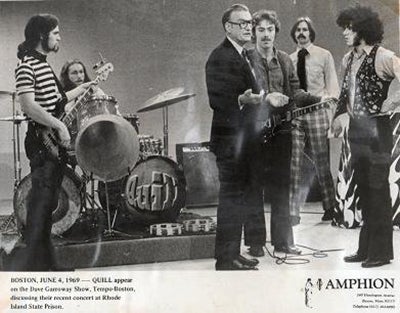
In the Spring of 1969, Quill was booked at Steve Paul’s The Scene in New York City. That particular night, as luck would have it, the New York City record industry was first introduced to Johnny Winter, and several members of Quill ended up on-stage for a late-night jam with Winter, Stephen Stills, and Jimi Hendrix. Their performance, according to legend, resulted in Quill being signed to perform at Woodstock, one of only three acts who had not yet released an album (the other two were Sha-Na-Na and Santana). On the strength of their Scene appearance and being signed to play at Woodstock, Ahmet Ertegün signed the band to a recording contract on Atlantic’s Cotillion label.
When Michael Lang signed Quill to perform at Woodstock, he also had them agree to do a “goodwill tour” of schools, community centers, prisons, and psychiatric facilities to gain the support of the Wallkill community for the coming festival. After the festival site was changed to Bethel, the band also lived with the Woodstock crew at the El Monaco Motel, entertaining them in the off-hours of building the festival site and becoming part of the crew in the process.
As the Saturday morning Woodstock audience wiped the sleep from their eyes and tried to find something to eat, John Morris and others read messages from the stage to ease everyone into the day. Dan Cole stated in a 2009 Boston Globe interview that “it was pretty awe-inspiring to get up on that Saturday morning, with the leaves still dripping from the torrential rain. Two or three hours later, we were helicoptering with cows below. We come over the hill, and there’s half a million people.” Shortly after noon, Morris announced, “Let’s have some music. Ladies and gentlemen, Quill!” and the band launched into a decidedly down-tempo version of their song, “They Live the Life.” Lead singer Jon Cole repeatedly told the audience, “Let’s get high,” but the plodding tempo and atonal harmonies of the song and Cole’s overly dramatic vocals, sounding like Doug Ingle’s voice in Iron Butterfly’s “In-A-Gadda-Da-Vida,” didn’t really get off the ground. An extended tribal jam in the middle of the song, complete with drum, cowbell, bass, and chanting, picked up the tempo a bit but did little to enliven the audience.
Quill’s second song, “That’s How I Eat,” was a more upbeat boogie tune that showed off the musical talents of the band members. The vocals were still a bit over-dramatic, and the melody seemed to get away from Jon at times, but Quill was finally getting the audience on their feet and dancing. The momentum would again grind to a halt after their third song, “Driftin,’” when the set had to be interrupted for an announcement from Hugh Romney encouraging everyone to be nice to one another and “hug ’em” if someone started to cause any trouble. After the interruption, Quill closed their 35-minute set with “Waiting for You,” during which Jon and other band members threw maracas, blocks of wood, and anything else they could find to get the audience near the stage to participate. The song included another extended jam that degenerated into a repetitive chant before wrapping up. Quill left the stage feeling a bit frustrated that they couldn’t generate the kind of engagement from the half-million-person audience that they could in the clubs in Boston.
Shortly after Woodstock, back home in Boston, Quill recorded the tracks for their debut album in their own studio. The album included only one song from their Woodstock set, the nine-minute, sixteen-second “They Live the Life.” The album was released by Cotillion in February 1970 and was largely ignored by critics and the public. Quill’s Woodstock performance had been filmed by Michael Wadleigh’s documentary team, and the director had actually edited a sequence featuring two of the band’s songs, but the band’s relative obscurity and the growing length of the documentary doomed the footage to the cutting room floor. Likely because of this (and the uneven quality of the album tracks), the record label chose not to exert any effort to promote the album.
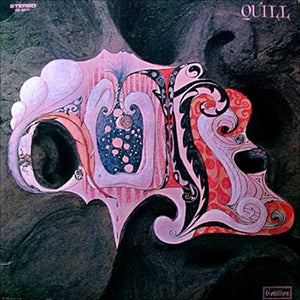
Discouraged, Norman Rogers left the band for a time, followed by Jon Cole. Their manager convinced Rogers to return, and the four remaining members, minus Jon Cole, returned to the studio to record a second album. When Cotillion refused to release it, the band broke up for good.
Jon worked with other Boston musicians for a time, then started a do-it-yourself auto repair company. He later moved to Hawaii where he started a solar energy business. He continues to be active in the alternative energy field. His brother Dan ran a Boston recording studio after Quill disbanded and produced and managed a number of local bands before going to work for Sony Professional Products Group. Dan is now a private investor and management consultant in Portland, Oregon where he is said to be working on an album in his own digital studio. Roger North continued as a drummer, working with Odetta and The Holy Modal Rounders. Around 1968, he created North Drums, a unique line of molded, curved drums. In the early 1970s, he started his own company to manufacture the drums, which gained a following and were sold through the early 1980s. He also lives in Portland, Oregon and currently plays in The Freak Mountain Ramblers. Norman Rogers returned to Brattleboro, Vermont and played with several local bands there. He died peacefully at his home in 2011. Phil Thayer dropped out of sight after Quill broke up and is living in Florida.
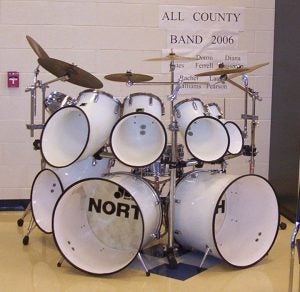
They may have only been a bar band from Boston, and the members of Quill may be ambivalent about their time together and their performance at Woodstock, but they made history on Saturday, August 16, 1969, as the first rock band to play at the Woodstock Music and Art Fair.
—Wade Lawrence & Scott Parker
